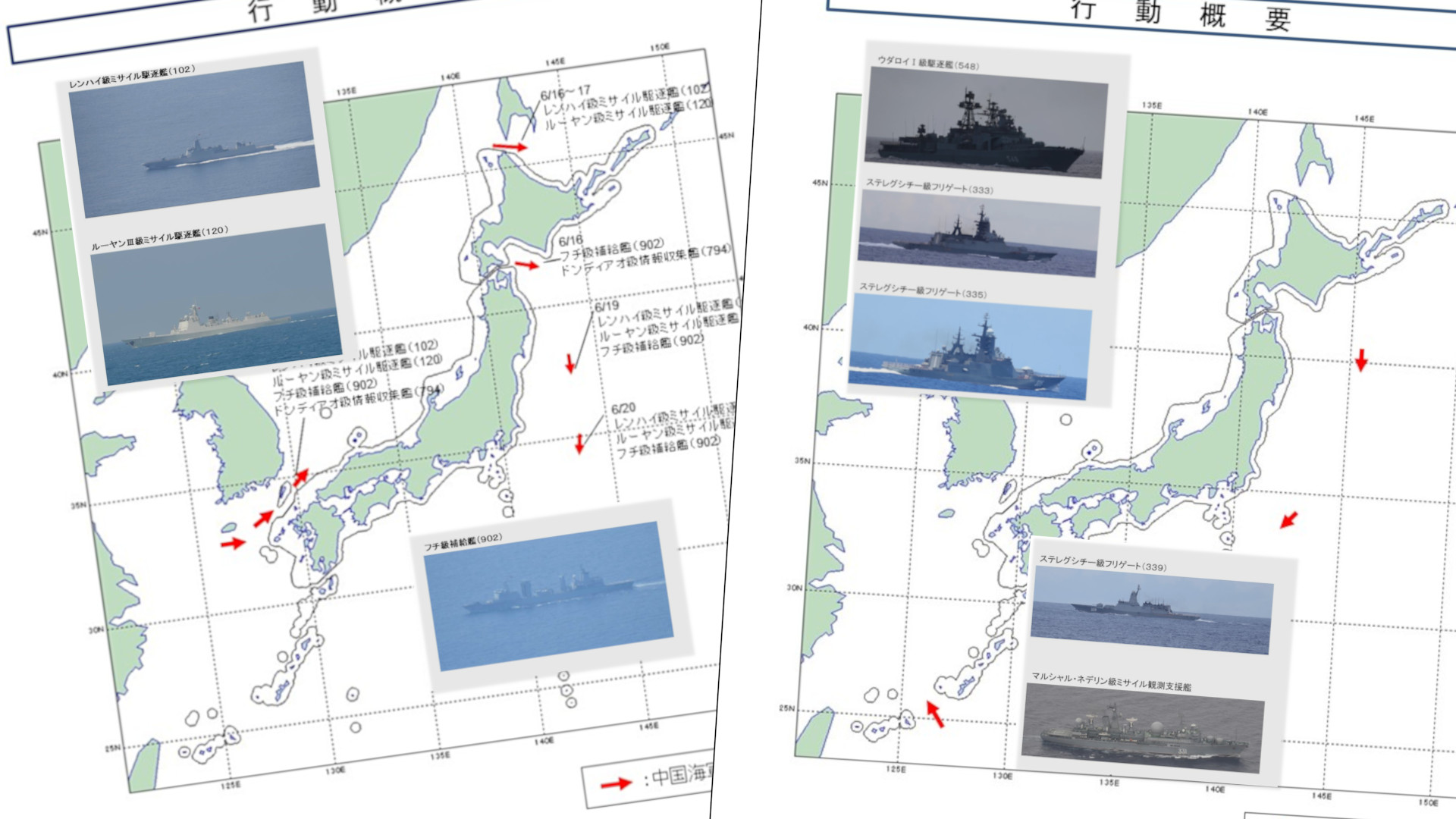The Japan Self-Defense Forces are continuing to monitor a flurry of Russian and Chinese naval activity in the general vicinity of the country. In the past four days alone, Japanese forces have tracked at least four Chinese and 16 Russian naval vessels sailing around the country’s home islands and other outlying areas it controls. This is similar to a joint patrol by a flotilla of warships from China and Russia around the country’s territory last year.
Just today, the Japanese Ministry of Defense issued a new press release regarding the movements of the trio of Chinese ships – a Type 055 destroyer, China’s most modern and capable surface combatant, as well as a Type 052D destroyer and a Type 901 replenishment ship – southward in the Pacific to the west of the island of Honshu. The Japan Self-Defense Forces (JSDF) first tracked those ships passing from the East China Sea into the Sea of Japan via the Tsushima Strait on June 12-13, at which point they were also being accompanied by a Type 815 electronic intelligence-gathering vessel.
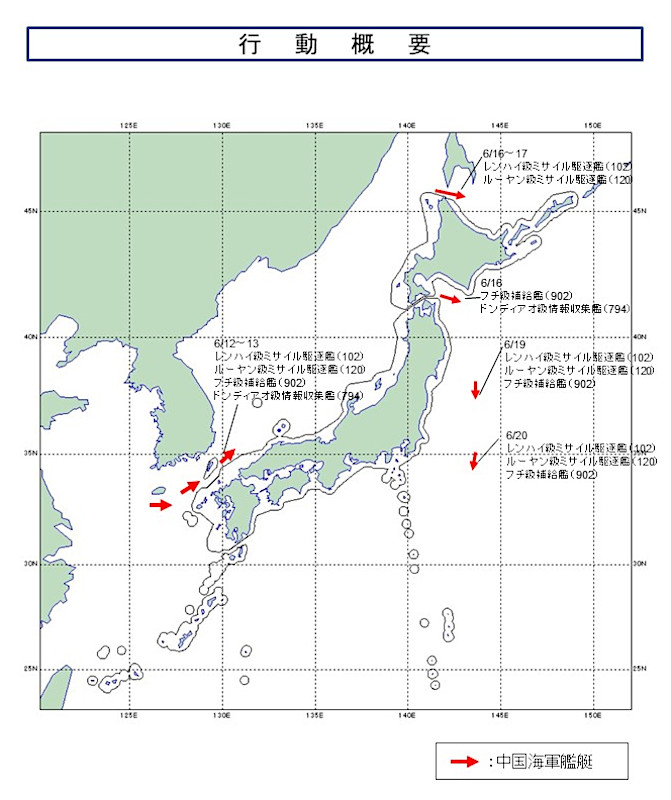
The two Chinese destroyers subsequently sailed north and then into the Pacific Ocean after passing through the Soya Strait, which separates the Japanese home island of Hokkaido from Sakhalin Island to the north, and then the Sea of Okhotsk, on June 16-17. The Type 901 replenish ship and the Type 815 intelligence vessel also passed into the Pacific at around the same time, but through the Tsugaru Straits between the home islands of Hokkaido and Honshu. The JSDF has not provided an update about the Type 815 since June 16.

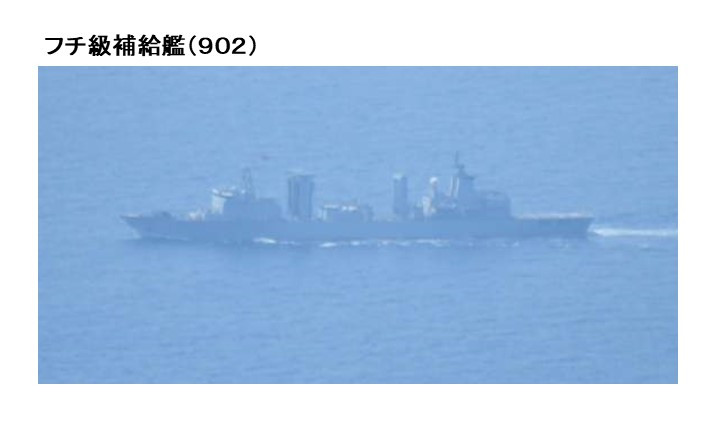
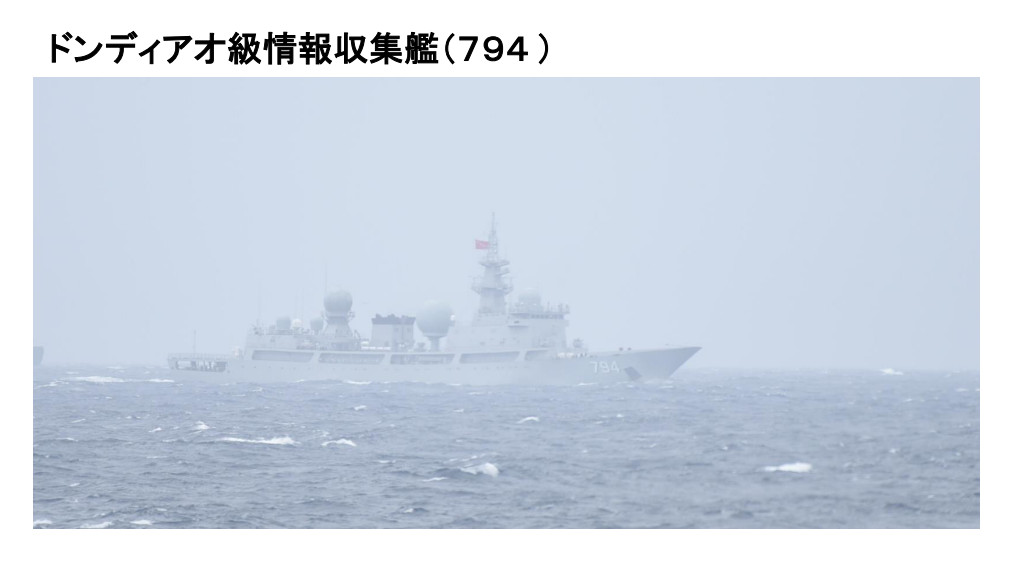
In addition to this Chinese naval activity, yesterday the JSDF had issued a separate press release regarding the transit of five Russian vessels into the East China Sea from the Philippine Sea via the waters between the Japanese islands of Okinawa and Miyakojima. This flotilla included the Project 1155 Udaloy class destroyer Admiral Panteleyev, the Marshal Nedelin class missile range instrumentation ship Marshal Krylov, and three Project 20380 Steregushchiy class corvettes, the Sovershennyy, the Gromkiy, and the Hero of the Russian Federation Aldar Tsydenzhapov. The Marshal Krylov was publicly reported to have been converted into a command and control ship for the Russian Navy’s Pacific Fleet and has been observed as part of other similar surface action groups, including one that pointed sailed relatively close to the U.S. Hawaiian Islands last year.
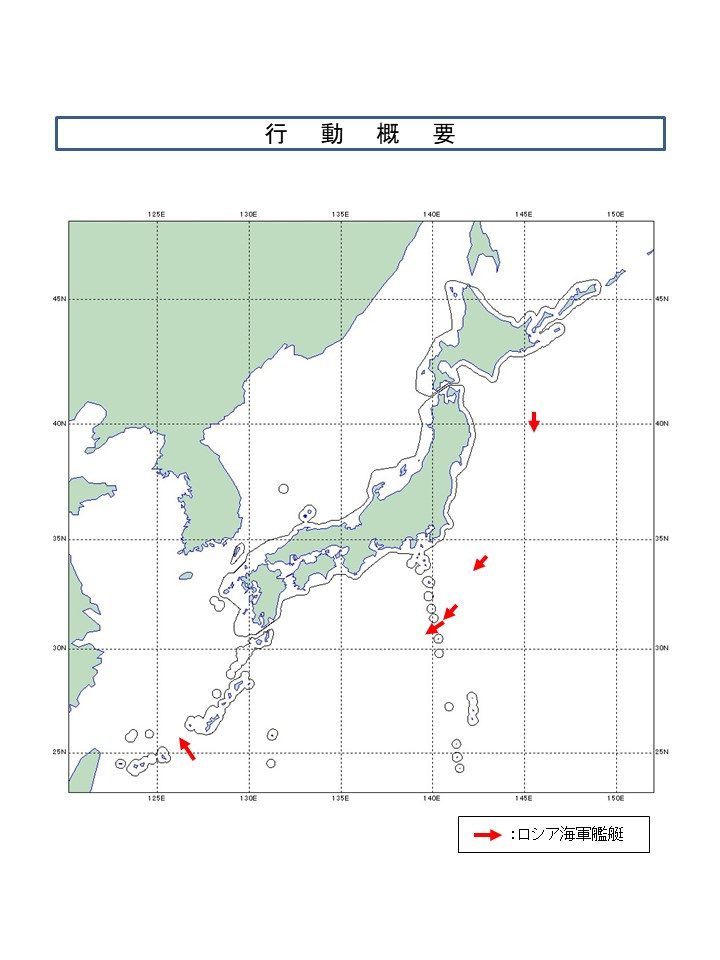
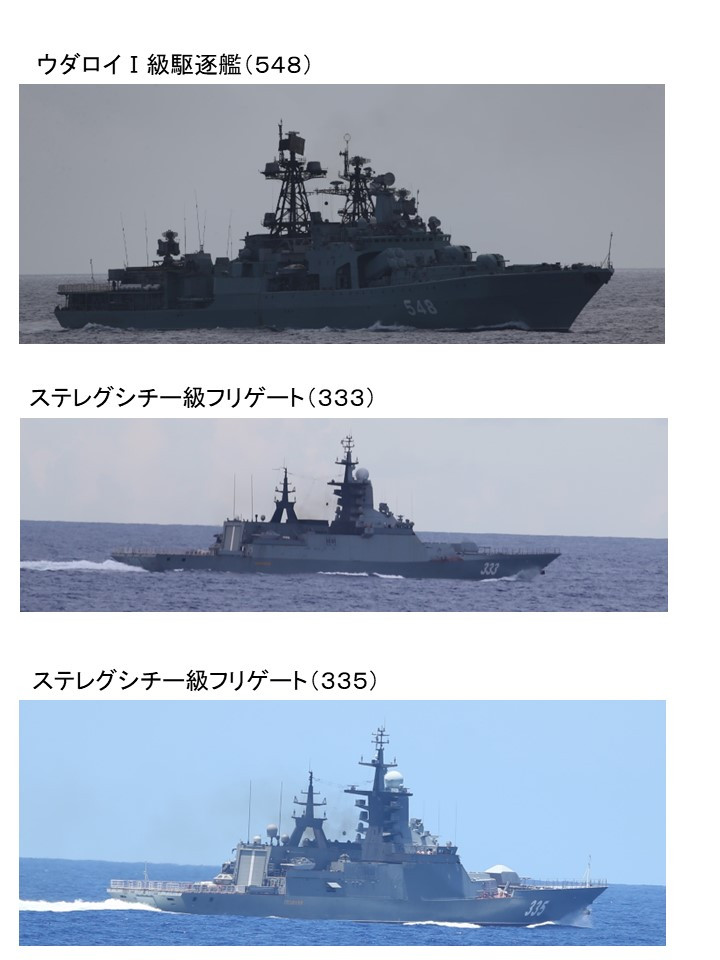
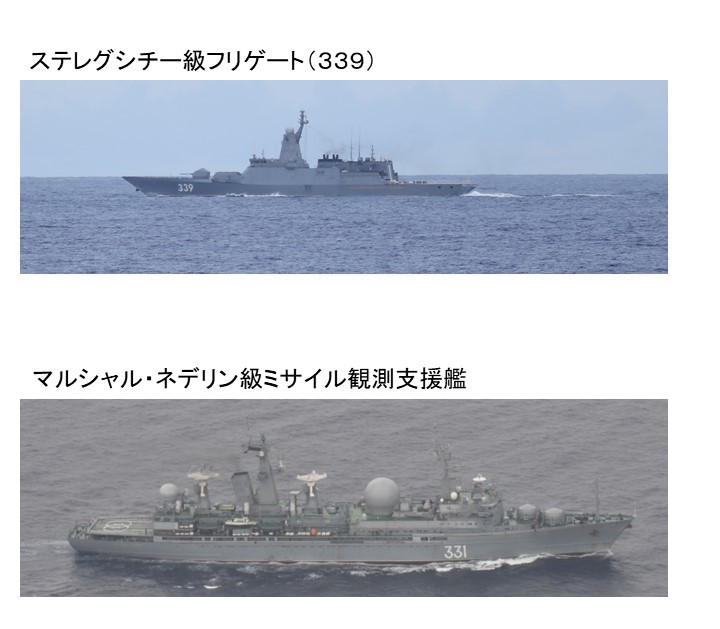
Japanese authorities first announced they were tracking these five vessels in the Pacific to the west of Hokkaido earlier in June. For a time, they were also joined by the Project 1155 Udaloy class destroyer Marshal Shaposhnikov and the Project 20380 Steregushchiy class corvette Gremyashchiy.
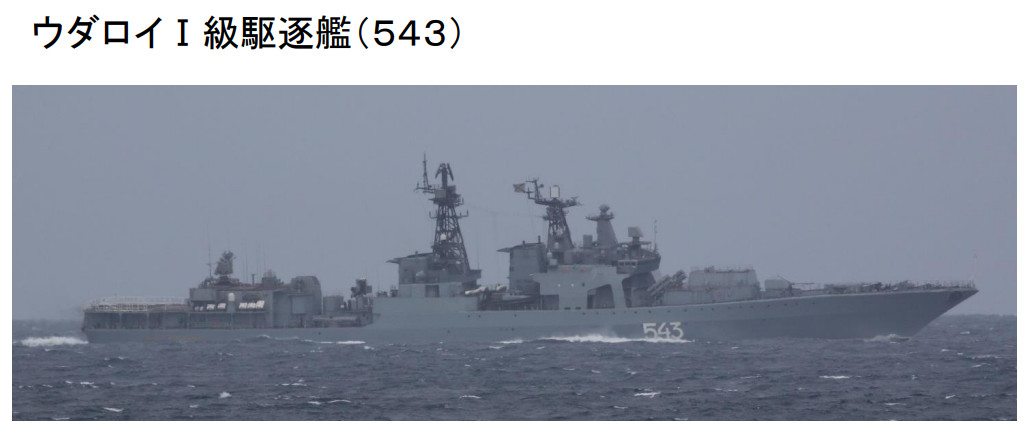
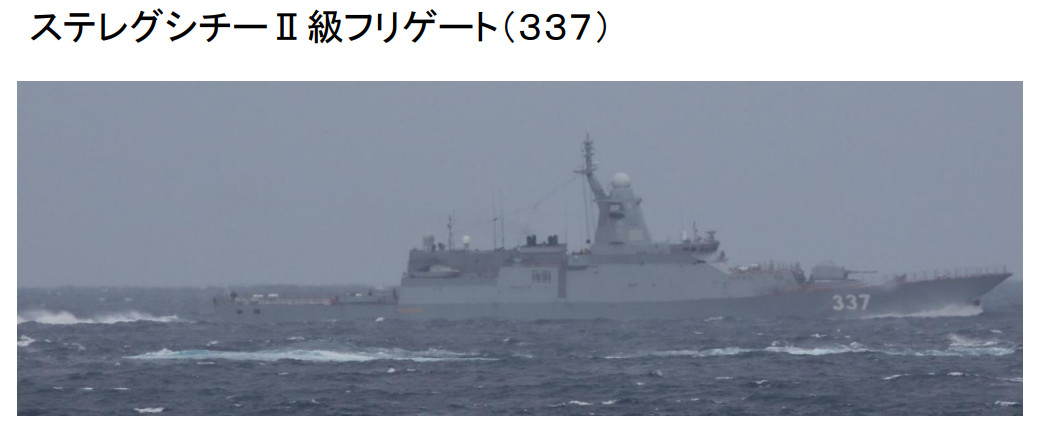
Separately, on June 17, the JSDF tracked a Russian Navy Project 1124 Grisha class corvette, six Project 1241 Tarantul class corvettes, a Project 160 Altay class replenishment oiler, and a Project 320 Ob class hospital ship, heading west from the Sea of Okhotsk into the Sea of Japan via the Soya Strait. The images below from the Japanese Ministry of Defense show where this flotilla was tracked sailing last week, as well as the individual ships.
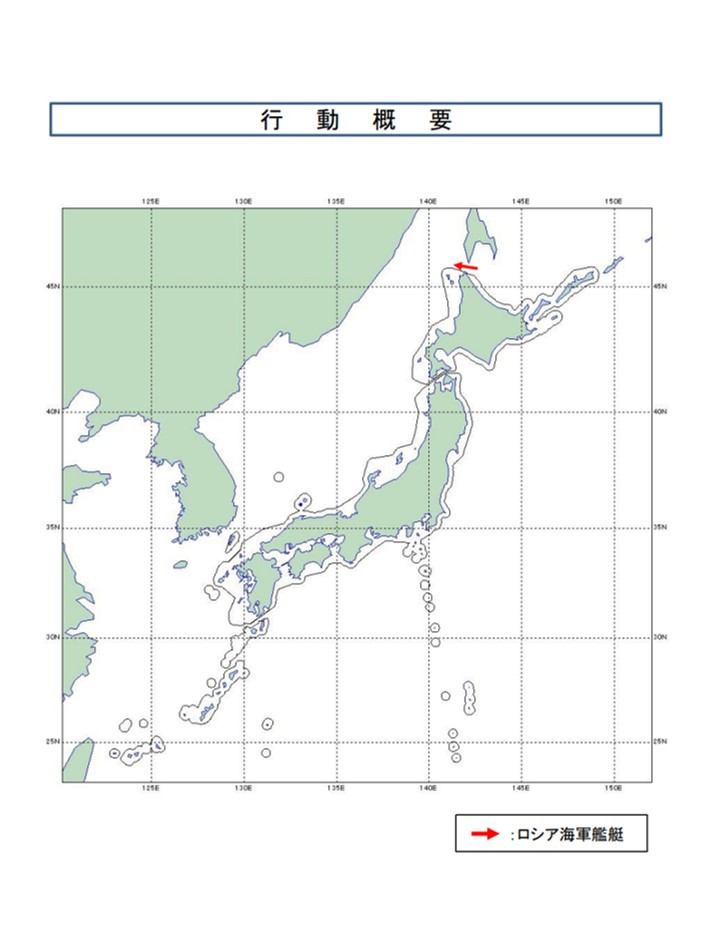

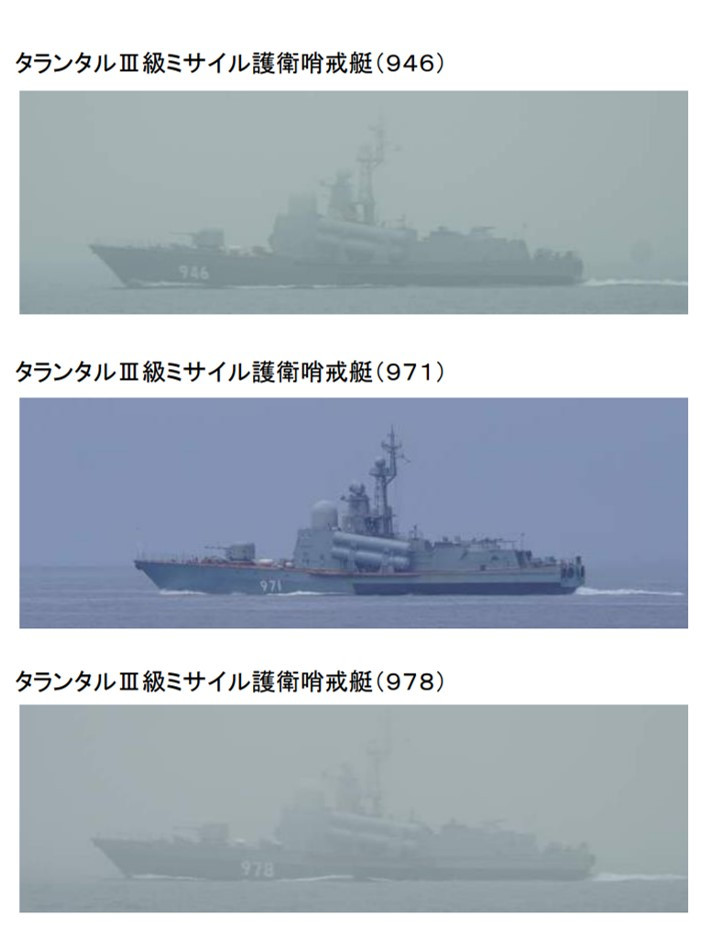
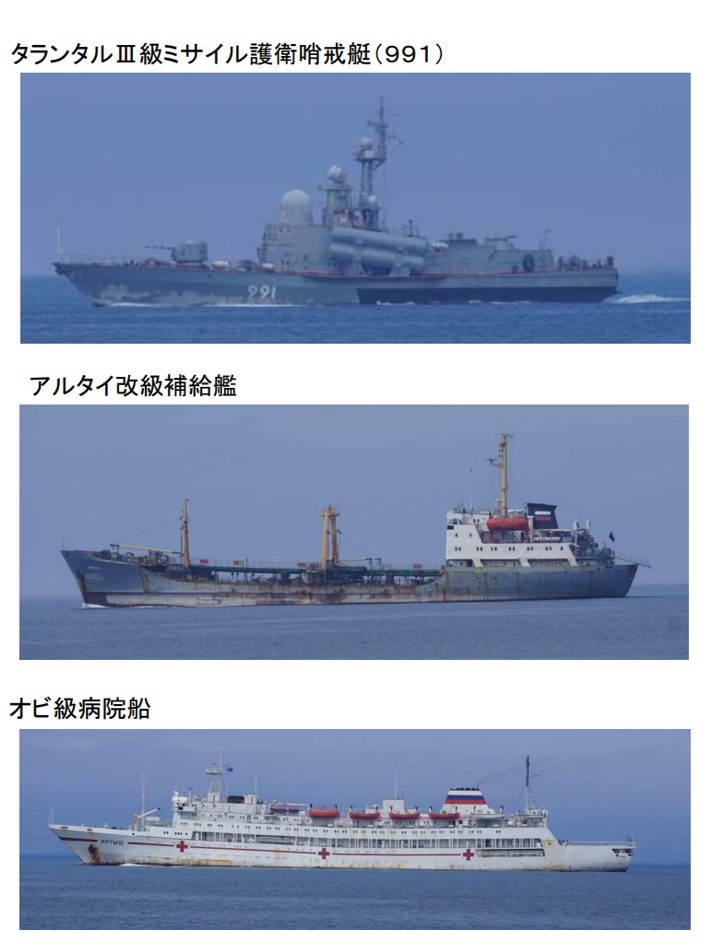
Unlike last October, when a combined flotilla of 10 Chinese and Russian naval vessels conducted a patrol around Japan’s home islands, the two countries’ activities do not necessarily appear to be directly linked.
The Russian Navy’s Pacific Fleet announced today that the two Udaloy class destroyers, at least some of the Steregushchiy class corvettes, and the Marshal Krylov had recently refueled at sea in the region in the course of recent exercises in the East China Sea and the Philippine Sea. Those drills focused on air defense, anti-submarine warfare, and search and rescue operations, according to an official statement.
Earlier in June, Chinese state media reported that the Type 055 destroyer, Type 052D destroyer, and Type 901 replenishment ship were conducting “long-distance” exercises in the region. The People’s Liberation Army Navy (PLAN) sent a very similar flotilla through waters around Japan, as well as near portions of the U.S. Aleutian Islands chain, last fall.
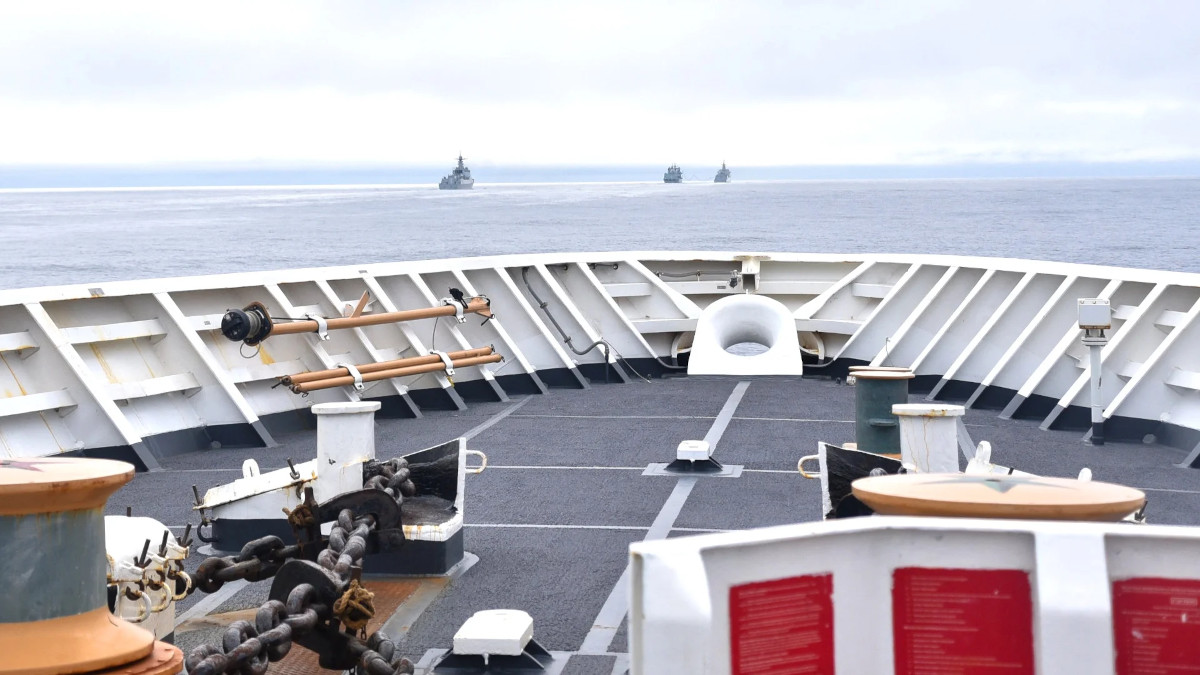
Even if the Chinese and Russian naval activity is not linked together, it is still a significant demonstration of their representative capacities to conduct such operations around Japan and elsewhere in the western end of the Pacific region. Though ostensibly these deployments have been for various exercises, it’s not hard to see how they could also be intended to send signals to authorities in Japan.
In terms of Sino-Japanese relations, there has been a notable shift in Tokyo when it comes to public overtures of support for the government on the island of Taiwan, which the government in Beijing views as a rogue province and often threatens with the prospect of forcible reintegration with the mainland. Japanese authorities have indicated that they would be more willing to contribute directly and potentially militarily in a defense of Taiwan scenario. U.S. air and naval bases in Japan, many of which are collocated with JSDF facilities, could very well be targets for Chinese strikes in the opening phases of a high-end conflict over Taiwan.
Following Russia’s all-out invasion of Ukraine in February, the Japanese government has provided military assistance to the Ukrainian armed forces and joined in a crippling international sanctions regime targeting the Russian government. This, in turn, led to authorities in Moscow pulling out of already stalled talks that have been aimed a formally concluding a World War II peace treaty between the two countries. Japan and Russia have competing territorial claims to the Kuril Islands chain, which includes Sakhalin. In March, Japanese Prime Minister Fumio Kishida referred to portions of the Kurils under Russian control as being illegally occupied, language that Japanese officials had not previously used publicly for more than a decade.

In May, the Chinese and Russian militaries had teamed up to fly a group of bombers – four Chinese H-6s and two Russian Tu-95 Bears – on a joint patrol near Japan, as well as South Korea. Similar joint air operations have become a more regular occurrence in recent years, additional demonstrations of the two nations’ abilities to operate and project power together. The sorties also came amid a summit of the members of the Quadrilateral Security Dialogue – the United States, Australia, Japan, and India – in Tokyo.

All told, whether or not the recent burst of Chinese and Russian naval operations around Japan continues in the near term, it underscores how both countries are stepping up routine military activities of various kinds in this part of the world in support of their respective regional security interests.
Contact the author: joe@thedrive.com
